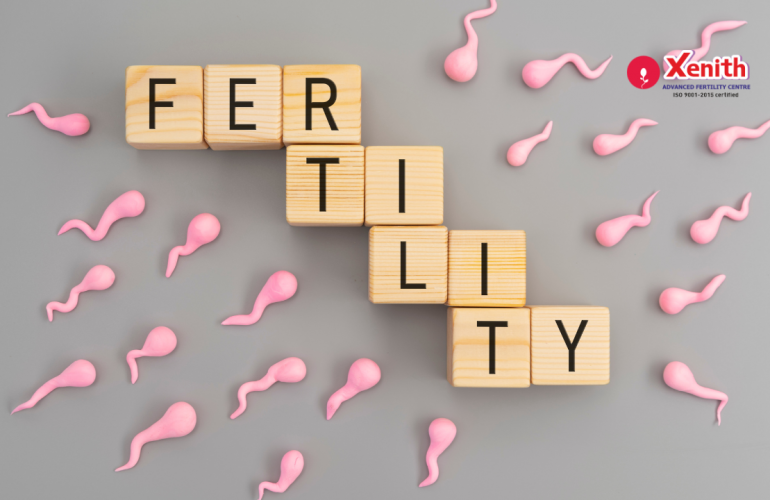Fibroids are muscular tumours that develop in the myometrium or the muscular layer of the uterus. . These tumours are usually non-cancerous, or what we call benign tumours. About 25 per cent of women of childbearing age will develop fibroids and upto 30-40% of women over the age of 40 have fibroids. They are most common in women in their forties and fifties. After menopause, fibroids usually shrink.
Fibroids can grow as a single tumour or there may grow as multiple tumours. They can be small, big, or grow to be very large. Some women who have fibroids don’t even know they have them. They do not experience any symptoms. However, there are women who have severe pain and heavy bleeding due to fibroids. Such women may find fibroids hard to live with.

Free Thursday Consultation
Why do fibroids grow?
Doctors and researchers have not yet fully understood why fibroids grow. We do know that hormone levels of estrogen and progesterone affect the growth of fibroids. If you have fibroids when you are pregnant, they can grow fairly quickly because of the rise of hormone levels during this time causing complications. Some studies show that women are at more risk of having fibroids when:
- Family history – If your mother had fibroids, your risk of having fibroids is likely to be three times higher than the average
- Obesity – Women who have a higher BMI run a risk of having fibroids that is two to three times higher than the average
How do I know if I have fibroids?
As mentioned earlier, some women may have fibroids and not have any symptoms. There is usually no need to treat women who do not have any symptoms unless these fibroids are big or are impeding pregnancy. Women who do have symptoms may experience:
- Painful and heavy menstruation. The loss of blood can lead to anaemia.
- A feeling of heaviness in the lower stomach area (pelvic area)
- Lower back pain
- The need to frequently urinate because fibroids putting pressure on the bladder
- Fibroids can cause discomfort due to pressure on the rectum
- When fibroids are very large they can make a woman appear pregnant
- Pain during sexual intercourse
Sometimes, fibroids can be the cause of infertility.
How do I know for sure if I have fibroids?
Fibroids can be diagnosed through imaging tests such as ultrasound or magnetic resonance imaging (MRI). A sonohysterogram can also be used to determine fibroids which are present in the cavity of the uterus that is submucosal fibroids.
Sonohysterogram is a harmless no-radiation procedure to look at the inside of the uterus. It uses sound waves and a computer to create images.
Hysterosalpingography can be used to diagnose fibroids but is most commonly used for evaluating the fallopian tubes and the reasons for infertility. It is also performed in recurrent early pregnancy loss and pre-term delivery.
A good Ultrasound and especially a 3D ultrasound is the best tool to diagnose fibroids and determine its type and location.
What are the treatment options for fibroids?
Our doctors at Xenith will help you determine the type of treatment you will need to treat fibroids. The decision will be based on factors like:
- Severity of symptoms
- If you have plans to grow your family in the future
- The size of the fibroids
- The location of the fibroids
- Your age and proximity to menopause
Treatment can involve over-the-counter medication for pain relief as well as iron supplementation.
- Hormone treatment to control fibroid symptoms
- Drugs can help shrink fibroids but these drugs have side effects and can be used temporarily (six months). Usually, they are given for a short duration before surgery. Shrinking tumours makes them easier to remove surgically.
- Women who have moderate to severe symptoms may be advised surgery. There are several surgery options and many of them can be done through laparoscopy:
- A myomectomy is a type of surgery that removes the fibroids without taking out any of the healthy tissues in the uterus. This type of surgery is used when women are younger and want to have the ability to get pregnant.
- A hysterectomy is usually recommended with fibroids that are large, cause heavy bleeding, and when the woman is nearing the age of menopause. The entire uterus is removed.
Some other treatments available but not very commonly used are
- Myolysis uses a needle guided by laparoscopy to conduct an electric current. This destroys the fibroids.
- Fibroid or artery embolization is a process that cuts off the blood supply to fibroids causing them to shrink. This process can be used for women who do not want to have children, but not all women can qualify for this treatment.
Fibroids and Infertility-
Fibroids which are large in size, those that are present inside the uterine cavity and those that are at locations which hamper pregnancy, may need to be removed as they impact the chances of pregnancy. A thorough evaluation of any fibroid is needed before taking any decision to operate, as when not indicated it is better to leave the fibroids as they are. However, evaluating when a removal would be beneficial, is key to enhancing pregnancy chances. A woman does not have to live with the severe symptoms of fibroids, neither suffer from infertility due to them. There are many fibroid treatment options available to restore quality of life. Fibroids are just one among many of the reasons why pregnancy is often delayed. If you have been trying to start a family for six months or more and have not succeeded, come visit us at Xenith Advanced Fertility Clinic. We have had the joy of helping hundreds of happy couples fulfil their dreams of having children.




